How to Prepare for the Threat of Garbage
It’s all about how to prepare for the threat of garbage today. When a disaster hits, some families have their food, water, and a game plan of what to do.
However, we all tend not to think about what we will do with the garbage. Globally, we produce 2.12 billion tons of waste every year.
If that garbage was put into trucks, it would circle the globe 24 times! That’s a lot of garbage. Of course, as food and supplies start to dwindle, the amount of garbage will diminish, but we should still know how to prepare for the threat of garbage.
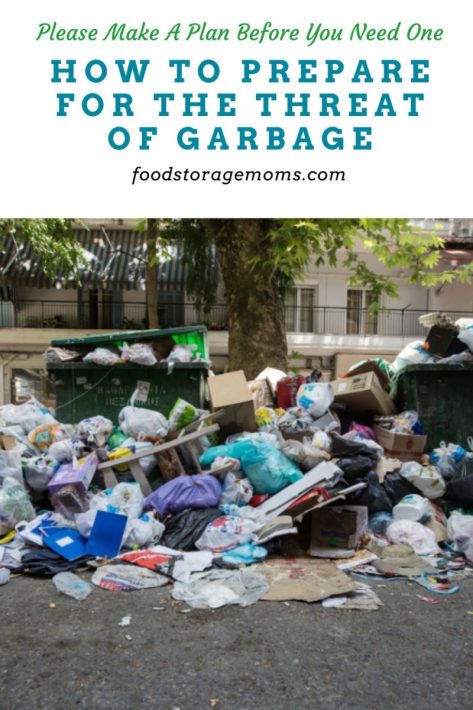
What is The Threat of Garbage?
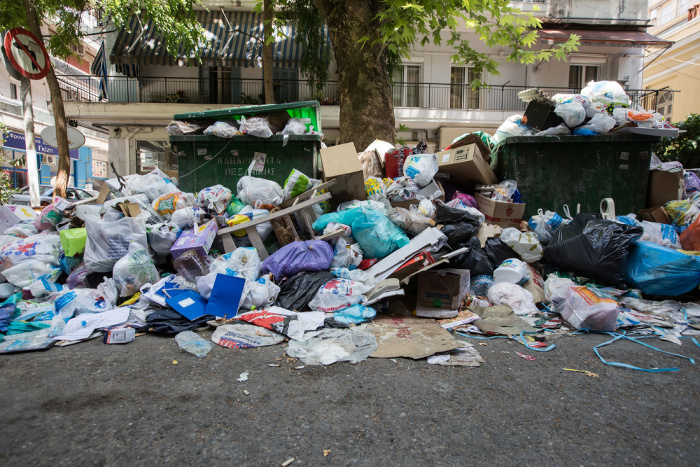
Garbage is probably one of the biggest threats you will face during a long-term disaster or collapse. This is especially true in areas around the world that don’t have regular trash collection. It can happen here as well as we’ve seen in large cities when city workers go on strike or a severe storm makes trash collection impossible.
So, what kind of threats can you expect during a disaster or collapse? Read below to find out.
The Threat of Illness
As waste stops being collected the threat of illness increases and human health is put at risk. The frequency of illnesses such as diarrhea and respiratory infections will skyrocket.
Think about the areas where solid waste management is spotty or non-existent. In many parts of Africa, there are devastating epidemics of mosquito-borne malaria, Lassa Fever, Yellow Fever, and other grave diseases. Many third-world low-income countries haven’t developed a sustainable waste management system with the required expensive infrastructure needed. All countries have waste generation issues, it’s how they deal with it that matters.
Bugs and Rodents will Come in
Whether it’s flooding, a hurricane, or other natural disasters, massive debris fields can develop. When that happens, first off, you’ll see fleas, flies, and gnats moving in. Next, you will begin seeing more ants, cockroaches, and then rats and other rodents moving in. Not only do these bugs and rodents become a huge problem, but they carry diseases that raise challenging health issues.
The Stench will Be Unbearable
As you can already imagine, the stench will become unbearable. Even if responsible residents are taking care of their garbage, you have to think of all the other garbage that is just getting tossed out by other people. The stench will be enough to keep you from wanting to walk outside.
Toxic Chemicals
When a disaster hits, the local governments aren’t going to be able to handle the waste disposal efforts needed since trucks may not be able to negotiate streets. There’s also the issue of municipal solid waste landfills and water treatment plants not being available or functioning garbage for days or weeks. This means toxic materials that were once buried at the landfill or disposed of properly will not be taken care of.
One toxic chemical produced by garbage is methane emissions. Methane is a gas that is 86 times more potent than carbon dioxide. There is also the challenge of hazardous waste and other hazardous materials affecting various ecosystems, including the world’s oceans.
Water Contamination
Even landfills have been known to contaminate our water today in some places as reported in the news in recent years. Garbage leaks into the ground and our water supply. The toxins and bacteria contaminate the water making our already diminishing supply of water undrinkable.
Related: How to Store Water for Drinking and Cooking
Land Contamination
Additionally, garbage and general litter contaminate our land beside the ocean we rely on so heavily. This means that the soil will not have the proper nutrients that it needs to properly grow food. It also means that food that is grown in the soil could be contaminated with toxins harmful to your body, such as carcinogens.
Single-use plastic containers have created a global waste catastrophe! Plastic waste is seen everywhere you go as it clogs drains, kills wildlife, becomes marine litter, and damages or destroys natural resources.
It’s sad, but plastic bottles and other related plastic pollution can even affect tourism. We saw that happen at one of our favorite snorkel spots in Hawaii was inundated with plastic bags, plastic packaging, and other types of waste washed up on the beach and in the water nearby.
How to Prepare for the Threat of Garbage
From pollution issues and dirty waterways to toxic discharge and disease, the issue of garbage is very real and will hit Americans very hard during a long-term disaster. Here are some ways you can prepare for it!
Related: 37 Vintage Homestead Skills You Need to Know
Burn Your Garbage
Burning your garbage isn’t the healthiest solution in the world, but it has been done for thousands of years. If you want to begin preparing for the threat of garbage, it is a good idea to start the habit of burning the garbage that you can if it is allowed in your area. Most urban areas won’t allow it, but you can dispose of paper bags, boxes, and other flammable items in your fireplace during the winter months. Pay attention to air quality alerts in your area.
To this day, many people in rural areas of the U.S. still use this as a primary source of waste removal.
When disasters hit, you will want to burn your trash late at night. This way you don’t draw attention to your bug-out location. When you burn at night it makes it harder for people to see the smoke so it’s harder for them to find your location.
Bury Your Trash
If you have a long-term disaster, it is in your best interest to bury the trash you can’t burn, particularly household waste. When living in the city that can prove to be a real problem. If you have a contained yard, you may want to bury trash that is around your location as well.
To prepare for this, search for a location on your property or near your property that would be a good place to bury garbage. You’ll need to determine if that location can work as a temporary one that will allow you to at some point dig it up to remove the materials.
Local Laws
Local laws and regulations should also be part of your decision-making.
Burying your garbage helps prevent the spread of disease and keep rodents and predatory animals at bay. However, NEVER bury trash next to a water source, and never dig a pit below the water table level. Buried garbage in urban areas is more than likely a temporary solution.
Human Waste
This is where you must be very careful. The only thing we can do is be safe and bury our waste at least 200 feet away from any water source and at least 6-8 inches deep. This is one approach that for sure is temporary, but possibly necessary, depending on your local sewer situation. Check my archive for instructions to build your temporary portable toilet.
Get Creative
Start getting creative with your garbage, now. Stuff that you would normally throw away during the good times, you may want to hang on to when a disaster hits, and reuse items when you can.
A good way to prepare for the threat of garbage is to start brainstorming ideas of what you could do with the things you throw away.
There will be no recycling bin when a disaster hits, so you will have to find creative uses for things that can’t be burned or buried.
Feed Your Animals Scraps
Most of the things that you don’t normally eat now, such as certain scraps, vegetable peels, and damaged fruit can be used as animal feed. This will help minimize your waste and offer you an alternative feed for your animals.
Scraps are great for animals like chickens, goats, and rabbits, and some items may even be ok for dogs and cats.
Make a Compost
If you generally have a garden, you can easily start a compost pile now. You don’t have to wait until a disaster hits your area. Even if you live in the city, composting is an easy way to turn your organic waste into a valuable resource.
Composting produces a nutrient-rich material that can be used to make your gardens thrive without having to purchase fertilizer from the store. If you want to be prepared for the threat of garbage, start a compost pile, today.
How to Prepare for the Threat of Garbage in the City
Although many of these things can be done in rural areas, it is a little more difficult if you live in the city. Even during the short-term disaster of Hurricane Katrina, garbage became a huge issue for those living in the city of New Orleans. However, you can do a few things to help you prepare for the threat of garbage even if you live in the city.
Talk to Your Neighbors: Yes, I get that most people don’t want to listen to preppers and our suggestions. However, you can talk to them about starting a compost pile, recycling various items, and limiting the amount of trash that they generate, and thus help the environment.
The less trash you have around you after a disaster hits, the better it will be.
Start a Compost Now: You can always start a compost no matter where you are, unless in a highrise apartment. So, start doing that before things get bad. If you and your neighborhood group can develop and support a neighborhood garden, all the better.
Create a Plan: Look into places where you can bury garbage. Have a plan to get rid of as much garbage around your location as you can. Keep in mind, that you will be dealing with thousands of other people’s garbage pollution as well, not just your own.
Have a Bug-Out Location: If you live in a place where garbage could bury much of the city, consider having a bug-out location out of the city. Talk to friends, and family, or find a cheap place to buy where you can go.
Final Word
Although garbage may be the last thing on your mind, it is still a big threat to our survival after a disaster hits. Many people can die from the disease and toxicity of garbage that we can’t get rid of.
You must have garbage disposal built into your plan, especially if you live in the city.
What is your plan? Share it in the comments below! Thanks for being prepared for the unexpected. May God bless this world, Linda
This is on my wish list: Galvanized Metal Garden Incinerator Can
Copyright Images: Garbage Bags Depositphotos_16970553_S, Garbage Everywhere Depositphotos_158574814_S

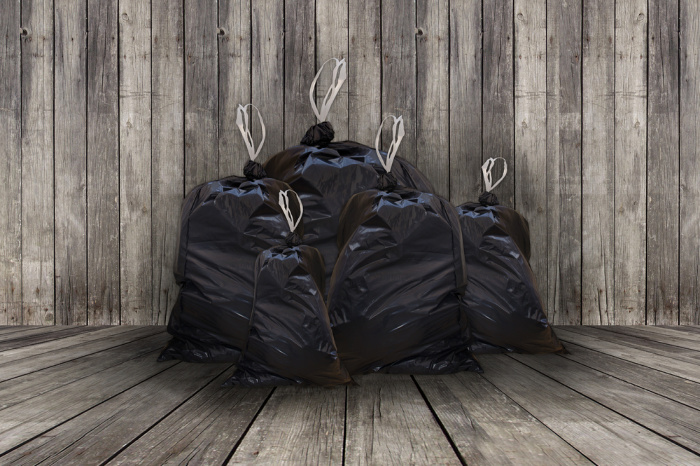


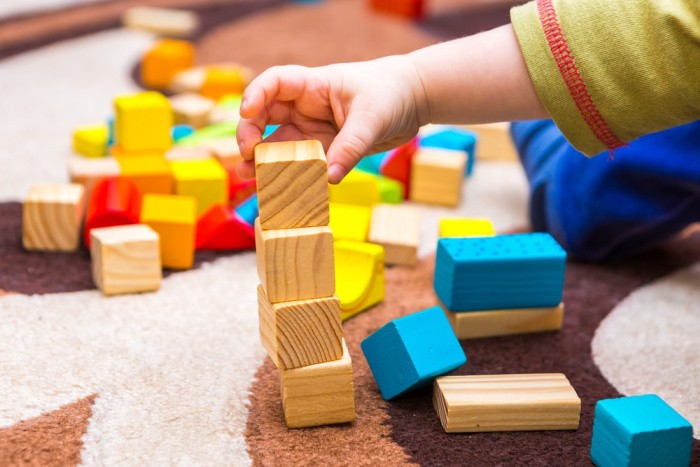
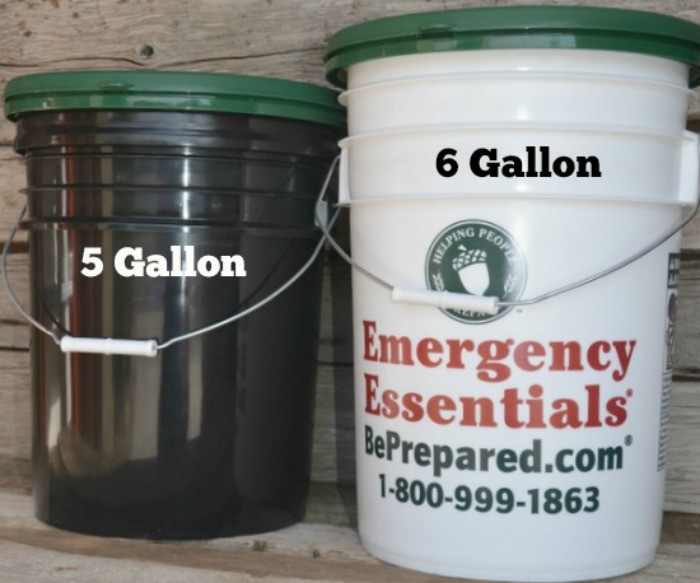


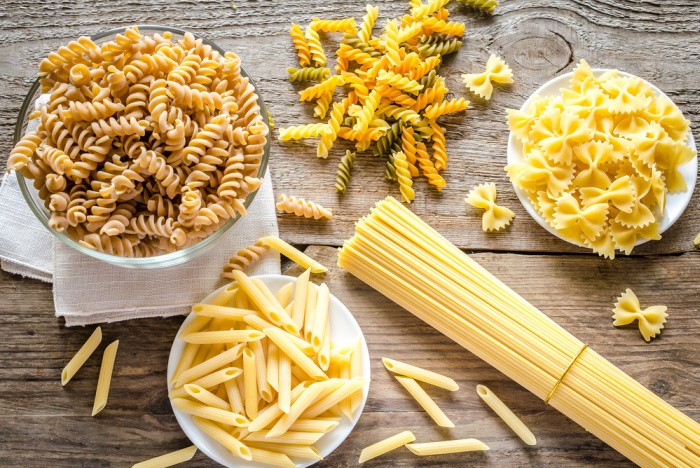













Once SHTF the definition of garbage will change greatly. My neck is red so I’m already ahead of the power curve lol
Hi Matt, it will change for sure. Let’s hope we all have plans to live through it. Linda
Burning at night is not a good idea either as the fire glow is easily seen for a long ways off. Plus if you do this during low cloud cover or fog it increases the glow of the fire. It would be better to be burned in a wood heating or wood cookstove but not all people have this. Practice now to find a way to burn it that produces less smoke or seems as if it is a normal part of your home place.
Also learning to reuse more of the items that would have otherwise been burned would save a lot on trash accumulation. Never burn newspapers, they have so many other uses just google this for lots of ideas. Re-use, Reduce and Recycle is not just a green movement idea. It’s the way to have less trash and even not have to buy some things as you learn to re-purpose what used to be thrown away. It’s the way most people used to live and we all need to re-visit the idea of one time use items and how they can become multiple use items instead.
Hi Ma Kettle, great comment! We all need to revisit the idea to reuse and recycle items. Thanks for the tip on the low cloud covers. I love getting tips from others. Thank you so much, Linda
If all else fails just dig a large hole in the backyard or into a hill, away from the house.
Keep away from your water supply so there isn’t contamination.
A 55 gallon metal drum is good too. Air holes in the bottom sides. Lasts a long time. Screen the top so stuff doesn’t fly around and burn your house. A bucket of water nearby would be prudent.
Never leave a fire unattended. Think california.
Or just bury it if you have the space.
Hi Mary, thanks for the tips on the barrels. I’ve been thinking a lot lately where will all this garbage go when a huge disaster hits. Yes, indeed we need to think about the California fires. I don’t ever remember seeing so many fires in such a short time. We really do need to be able to control our garbage burn. Great comment, Linda
It’s not the same “threat” as your list – but randomly garbaging your food packaging and scraps during a food shortage is definitely a security threat >>> and ultimately a danger to life & limb if your prepping OPSEC is broken by garbage scroungers ….
Hi Illini, this is actually something we really do need to think about. Thank you so much, Linda
Illini Warrior, Please explain you post for me, randomly garbaginng food packing? OPSEC? I am still learning prepping and language. Thank you so very much.
Chris
Seems like a prolonged SHTF scenario would, itself, limit the garbage problem. After an initial surge of garbage, the supply would dwindle for a variety of reasons.
1. People won’t be going to the store to buy goods in multiple layers of packaging.
2. People running out of food and hungry won’t be throwing out half-eaten meals. They’ll eat every morsel.
3. The post office will stop delivering all that junk mail.
4. Things once seen as trash (empty soda bottles, empty tin cans, etc.) will be seen as resources.
People deprived of the market’s largesse will run out of things to throw away.
Just my two cents.
Hi Mic Roland, I think you are right. I was just thinking about all the trash that’s picked up on my street every week. In the beginning, we will have a lot of trash. Each week it will dwindle, as you mentioned. But there will still be a lot of trash. More than any of us are used to disposing of on our own. We will for sure be careful about items we use and need to reuse. Great comment, Linda
Garbage has always been a problem. The majority of the Jamestown colonist from 1607 died from diseases caused by garbage and human waste than anything else. They didn’t know that if you dumped trash and waste in wells that it poisoned the water. Add in that the river water was brackish part of the day and the colonist were is serious trouble. Today the knowledge level of the danger of trash is not much higher than the 1607 Jamestown colonists. After all, all we have to do is to carry it to the curb and it magically disappears.
Years ago I was teaching an Environmental Science class and had a speaker from the local waste management company who said that one day we would mine our landfills for the materials we toss in them. Think of all the steel and aluminum cans that are sitting there doing nothing, one day we will need them. Dr. William Rathje has done archaeological and anthropological studies of landfills and found all sorts of interesting and useful things. It’s amazing what we throw away.
If SHTF I think that it is going to take a while for suburban and urban areas to adapt to new methods of waste management.
Hi Angela, great comment, thank you. This is one of my biggest concerns that people realize they need to plan ahead for discarding human waste (safely) and trash. Linda
(I hate to begin every post with “back when I was in the Park Service,” but back when I was in the Park Service…)
Cooking and meal planning are definitely different when you don’t have refrigeration or garbage disposal. We didn’t want to carry a bunch of smelly, rotting food back down the trail with us when our ten-day “hitch” (time spent camped at a work site) was done. Burying food garbage in the woods could have attracted bears. So we had to be careful to cook enough for everybody, but not too much. We could put some leftovers in Tupperwares for lunch the next day, but couldn’t keep them any longer than that.
So, if everyone had eaten their fill and made a Tupperware for tomorrow, and there was still food in the pot, we would resort to a ritual called the Yum Yum. As we sat in a circle around the stove or fire, the pot would be passed around, and each person would eat a spoonful every time it passed them, until the pot was empty.
There was one girl who had gotten the job right out of high school and didn’t know much about cooking. She made rice and beans without knowing that rice and beans expand when you cook them! The Yum Yum that night was long and painful, and the new girl was not a popular person for a while after.
Hi Sarah, what a great story about packing in and packing out food! I love hearing stuff like this. Linda
An excellent article about the threat of garbage and how to prepare for it during a disaster. Thank you for sharing. It provides great tips for both rural and urban areas.
Hi Lucie, thank you for your kind words, my friend. We must be prepared to take care of the garbage for sure. Linda
Thanks for highlighting the often overlooked issue of garbage management during disasters. Your comprehensive guide on strategies like burning, burying, and composting is invaluable for both urban and rural settings. Encouraging community cooperation and having a bug-out location are key steps.
Hi Lucie, thank you for you kind words! We really do need to have a plan in place, even if we start with one step at a time. We will not have garbage pick up thats for sure. Linda
Preparing for the garbage threat is vital for disaster readiness. This article highlights the challenges, from illness risks to environmental harm, and offers practical tips like composting and community involvement. Proper waste management is essential for survival. Thanks for addressing this critical issue!
Hi Becky, you are so right, we must be ready to dispose of our waste properly. Some people may not think those garbage trucks that come once a week, at least where I live and the recycle trucks, will stop coming, well they will. We must be prepared by cutting down on waste NOW, but prepare for waste when the garbage trucks stop. Thank you for commenting. Linda
Linda, your insights on managing garbage in emergency situations are truly valuable. Do you have specific advice for urban residents with limited space to effectively handle waste during long-term disasters?
HI Violet, the only thing we can do is be safe and bury our waste at least 200 feet away from any water source and at least 6-8 inches deep. Garbage of course will not be picked up so we will need to burn it in a safe location away from your home. I know some people can burn their trash in barrels, but most cities will not allow it. Things will change after a disaster, you need to locate a place NOW that would be safe to burn your trash if need be. Linda
I have always been the woman chasing the garage truck to get rid of the last bit. I reduce and eliminate as much packaging as much as possible, and I repackage into reusable containers. I realize my efforts would not help long term. I have been trying to figure how to reuse as much as possible. This article has helped.
Hi Chris, OPSEC is operation security. We will have to eliminate as much trash as possible now and in the future. But my article will help us think ahead because it will be bad when the weekly pickup stops. We will get through it. Linda
As others noted–if SHTF, early glut of trash/garbage will be followed by less trash (because of both re-using/re-purposing, and less packaging and useless “stuff”).
I don’t worry about human waste; with a manure pile, it’s simply buried in that, where heat composting and time take care of it. For a number of years–just to see how well it would work–I composted it separately, with leaves, garden waste, weeds, and junk hay. Three compost bins: one started at midsummer, being actively filled; one “closed” (covered with hay/leaves) at that same midsummer, sitting for at least a full year to heat and rot down; and the third, a year old, ready to use as compost. Read up on it in “The Humanure Handbook.”
Any organic trash/waste also goes into compost (or possibly through the humanure toilet first, if it’s absorbent).
So–not a whole lot left to be burned, without new additions of packaging and single-use “conveniences.” For things that can’t safely be burned in fireplace or stove, a large metal trash can with holes punched in the sides and lid will work. I used a hammer and a large metal ‘pin’ to punch the holes; a pickaxe also works. And do remember that some plastics make toxic fumes when burned (so, never in the fireplace or stove!)
Wondering if I beat out Matt for redneck status…
Linda, glad to see you cover this important topic. On a personal level I have a burn barrel I use for disposing of paper products and dried weeds, but I could burn plastic in it as well if I had to. Our property is almost 2 acres so I could bury the waste also–though as I’ve mentioned previously, digging around here involves rock bars and pick axes. I compost any leaves from my fruit trees as well as some vegetable scraps but most of those would be going to my chickens since I wouldn’t be able to buy chicken feed if TSHTF. I already have a section of carrots set aside in my garden that I harvest the greens from as forage for my birds. Our dogs get our meat scraps, often covered with left over gravy. Our human manure could be buried or composted. And I can build an outhouse easily enough.
The bulk of our current garbage now is plastic that can’t be recycled. (We recycle plastic grocery bags, bread bags, etc.)
The other thing we’d have to deal with if TSHTF is the disposal of dead bodies because many of those we know won’t survive and undisposed of corpses are breeding grounds for cholera, typhoid and numerous other diseases. Burial or cremation will be the ideal option, but in urban areas that may not be possible so in those cases choosing empty buildings and piling the dead in them, locking them up tight and posting warnings of the contents would have to suffice. I’d recommend keeping any ID from bodies disposed of in case law and order is restored, so the dead can be identified.
Oh, and if you are trying to remain inconspicuous when burning garbage, use very dry wood. It’s almost smokeless.
Hi Ray, great tips as always. I do worry about the dead bodies, after CERT training, it helped a little. But it was mainly labeling and yes logging the names if you knew them. Cremation may have to be the solution, that sounds better than burning the bodies although it’s the same thing in a sense. With all of your experience you can keep your chickens alive via gardening. Digging holes in the desert areas is almost impossible becuae of the rocks and hard clay dirt. Linda